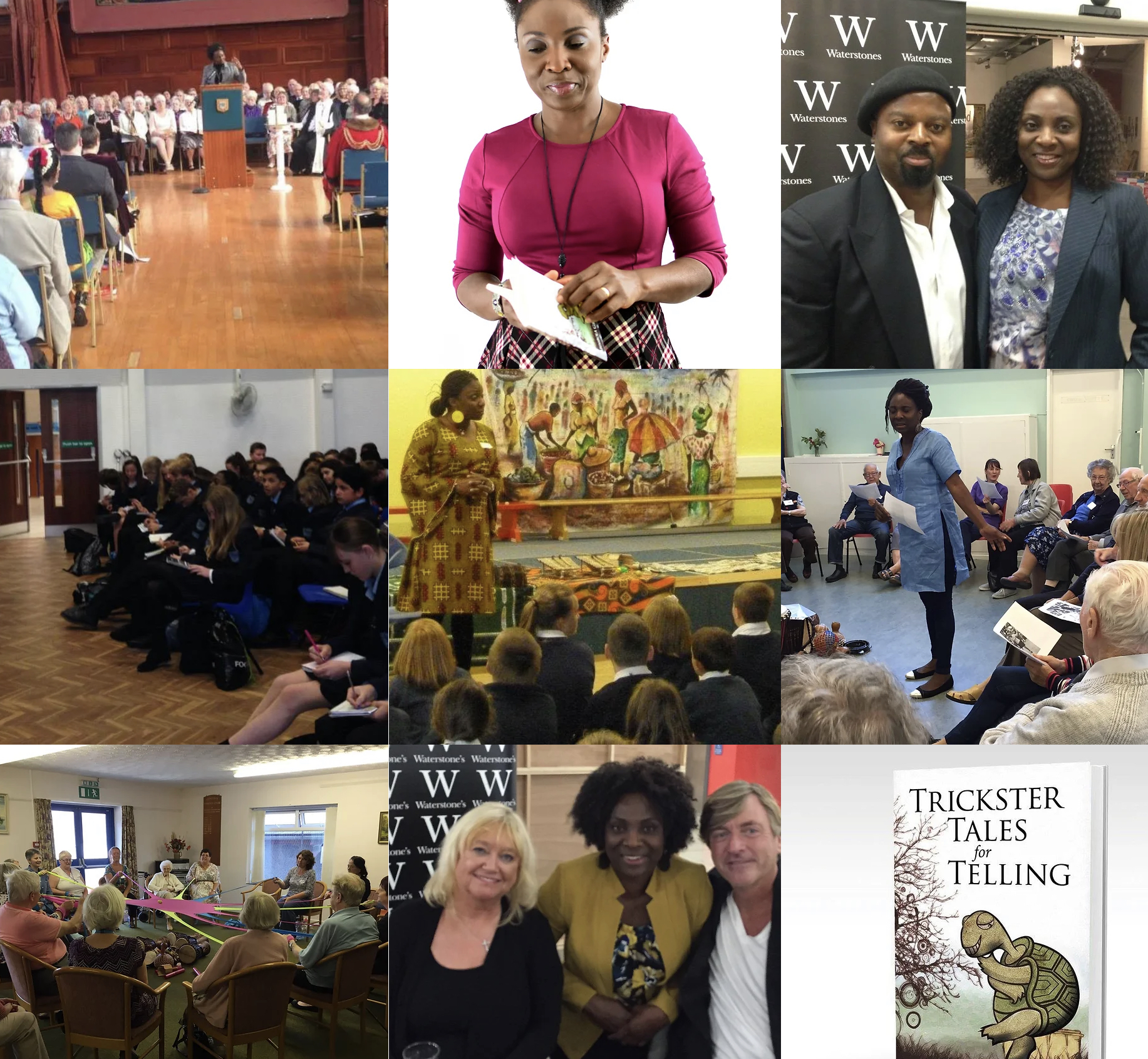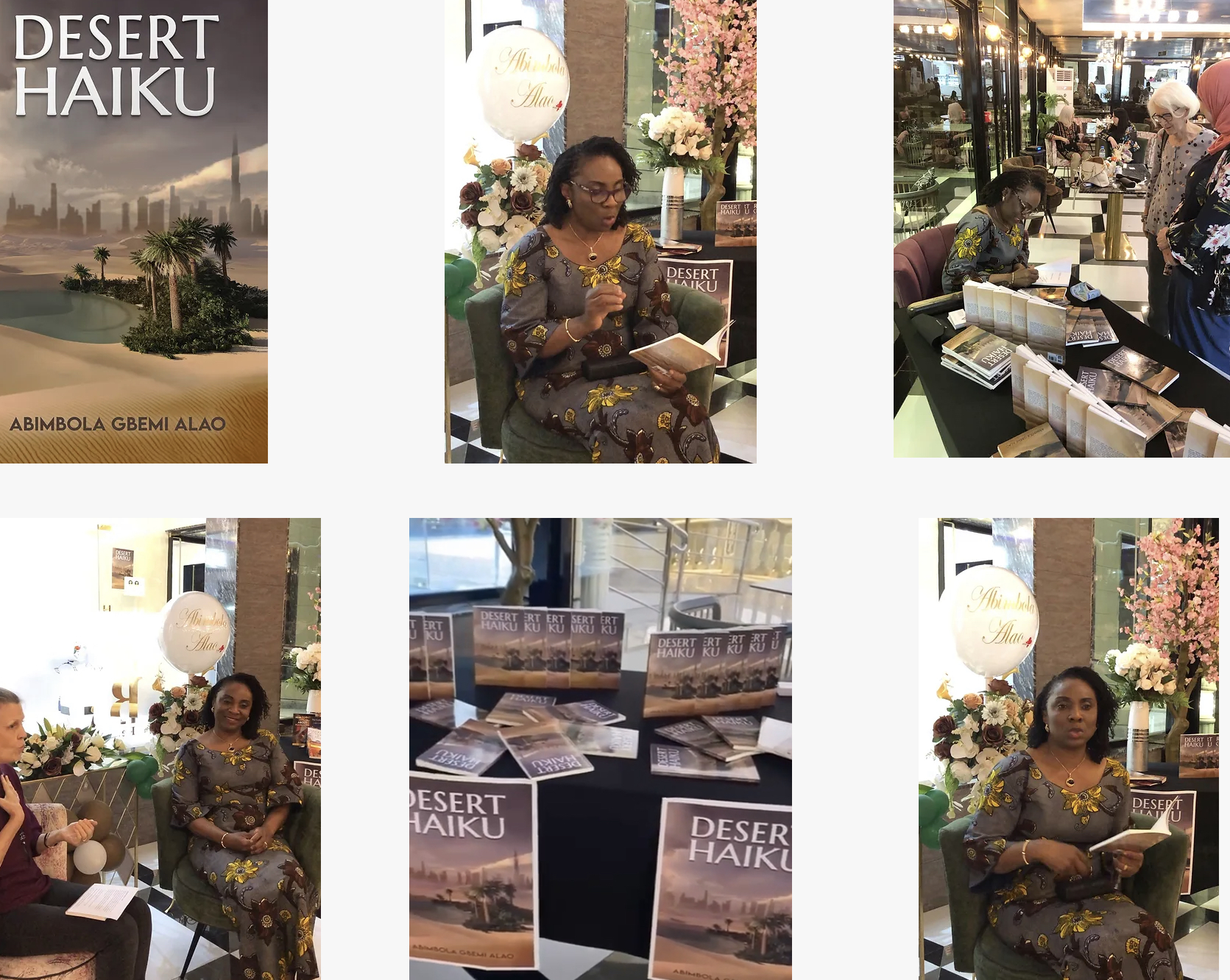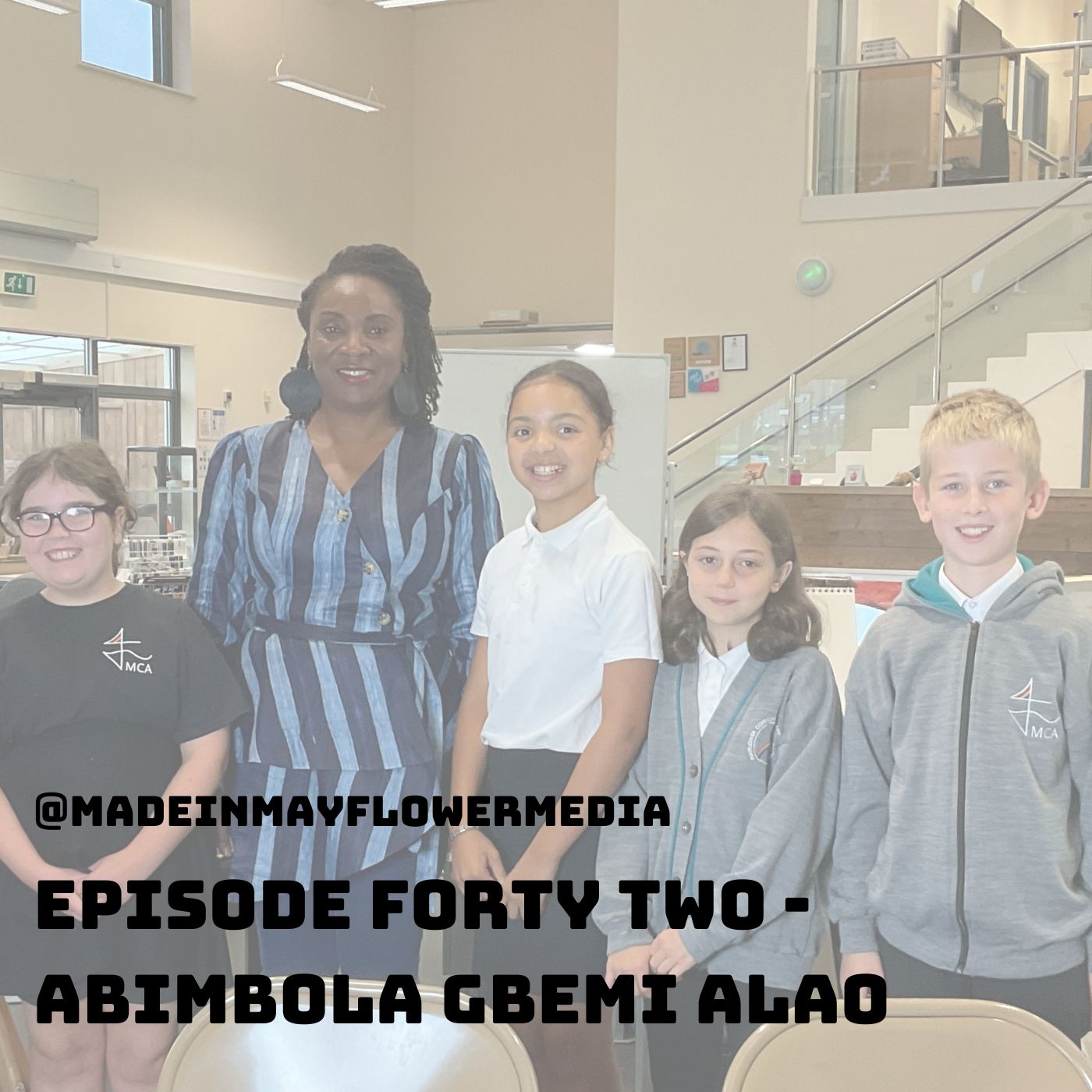ABIMBOLA ALAO | Storyteller


Podcast | Abimbola Gbemi Alao (Abi)

Intro:
Hello Abi, how are you?
Thank you for being here with us today and taking the time to deliver workshops across the school. It's fantastic to have you with us, and we are super excited about doing this podcast. Now let's get started.
- Hello Abi, nice to meet you. I have seen lots of interesting books throughout my school years and I have always wondered what it must be like to be an author. Could you tell us what it's like?
- I have heard that you are passionate about writing and music. Is this why you choose to do these for a job?
- I also know that you have written many books. Which is your favourite?
- Do you prefer writing stories, poems or songs?
- How old were you when you started writing? What inspired you?
- Have you met any famous authors? Have they inspired you?
- What was it like to be taught at the university of Ibandan?
- Do you write or speak in different languages?
- What is your next project?
Outro:
We are so grateful for your time today. This is learning that we will remember forever and I am sure you have inspired many young minds. We hope that you also enjoyed your time here at Mayflower, and remember...Together We Can...
Tips on How to Start Writing Your Novel! By Abimbola Gbemi Alao
The phrase, 'Everyone has a story to tell' sounds like a cliché, but those words are valid!
Why are humans addicted to stories? It is because we are 'wired' for creating narratives. We understand our world and individual lives through storytelling. Everyone is a storyteller, and we 'tell' 24/7. You are either listening to a story or telling one every moment of the day. Even when asleep, you are either an active participant or a passive observer of tales in your dream.
At some point, some of these story ideas may grab you, and they may not release you until you bring them alive.
So, what is the best way to start creating your story? There are many ways to do this, but the following seven steps may help you get started.
Step 1: Focus on a story idea that is fueled by passion
I have always been passionate about the theme of 'victory over adversity.' My Young Adult (YA) Novel, 'The Legendary Weaver' is the narration of a girl whose dream was going to be thwarted by illness, but she fought long and hard to overcome adversity. Sustaining your writing can be difficult; hence, the idea must be fueled by passion to keep you persevering throughout the writing process.
Step 2: Create your characters
Once you know the theme that you wish to explore, start creating your characters. Aim to answer the following questions: Who is your protagonist? What does he/she want? What are the obstacles standing in his/her way? Who is the antagonist? What are your characters' strengths and weaknesses? Your characters must be memorable; therefore, look around and become an observer. It is not easy to create believable stories entirely from imagination. 'Round', complex characters, as opposed to 'flat' ones, should 'mirror' real-life people. However, be careful that no one can identify his or her story from your writing.
Step 3: Whose point of view is it?
When you have created your characters, get ready to tell the story. The first question is, who is telling the story, and to whom are they telling it? There are three basic 'point of view': first person (I/we), second person (you) and third person (he, she, they, it). The first person may provide a 'safety net', if you are new to writing because the narrator is the protagonist, and the story can be engaging. The second person addresses the reader directly; however, it is rarely used to write an entire novel, mainly because it is difficult to sustain. The third person point of view can be limited or omniscient. The omniscient point of view is easier to explore because the narrator sees and knows all things, including the characters' thoughts and feelings. However, in the limited point of view, the narrator explores their issues or feelings, and the reader hears the narrator's perspective.
Step 4: Plot
You may not plan the entire structure of the story, but it might be good to know how you wish to start. I tell my creative writing students to start in medias res, that is, right in the middle. When you start in the midst of the plot, your readers are promised a memorable and entertaining story. Plunging into a crucial situation or conflict instead of perambulating around the plot creates a sense of immediacy that piques your readers' curiosity. The narrative arc or structure comprises beginning, rising action, climax, falling action, and end. Decide the sequence in which you wish to reveal the story to the readers. Are you going for a chronological or a non-linear structure? If you choose the latter, you can even introduce flashbacks and flash forward to create an engaging narrative.
Step 5: Setting:
Novelist, Elizabeth Bowen, said, "Nothing can happen nowhere." A memorable setting is crucial to a story, and your readers need to have a sense of place and time. In 'The Legendary Weaver', I tried to create balance with a short description of setting and storytelling. I am not a fan of multiple pages of topography description; however, I know the importance of getting readers to visualize the world of my story. The crucial question is - where will the scenes in your story be set?
Step 6: Who are your readers?
In my creative writing class, I always ask this question before the students start their writing projects. Often, some of them draw a blank as if they have not given it much thought. Why is this question so important? It is because it influences characterization and 'voice'. Firstly, to make your story captivating, the age group, theme and conflict must be relevant to the readers, and they need to empathize with the characters. You may not find many 17-year-old boys who are interested in the story of a middle-aged woman battling menopause issues! Secondly, the 'voice' of your characters should reflect the age group of your readers. For example, if you are writing for the 7-9 age group, the characters should ideally not sound like teenagers.
Step 7: Write, Write, Write
Writing a novel is no mean feat; however, the 'mountain' is surmountable. Writing is enjoyable, especially when one understands how to plan for it. Once you have chosen a theme, created your characters, made decisions about point of view and structure, it is time to put pen to paper. I always carry a notepad around in my bag to jot down ideas because I don't trust my brain to record every idea flowing through my mind. When I sit down to write, I go through the notes to revisit these points. When you start to write, do not stop to edit; write non-stop! Editing can wait; your ideas need to flow unhindered.
Remember, it is good to plan your story, but don’t let the process hold you back from the actual project, which is your writing. Start writing that novel today.
